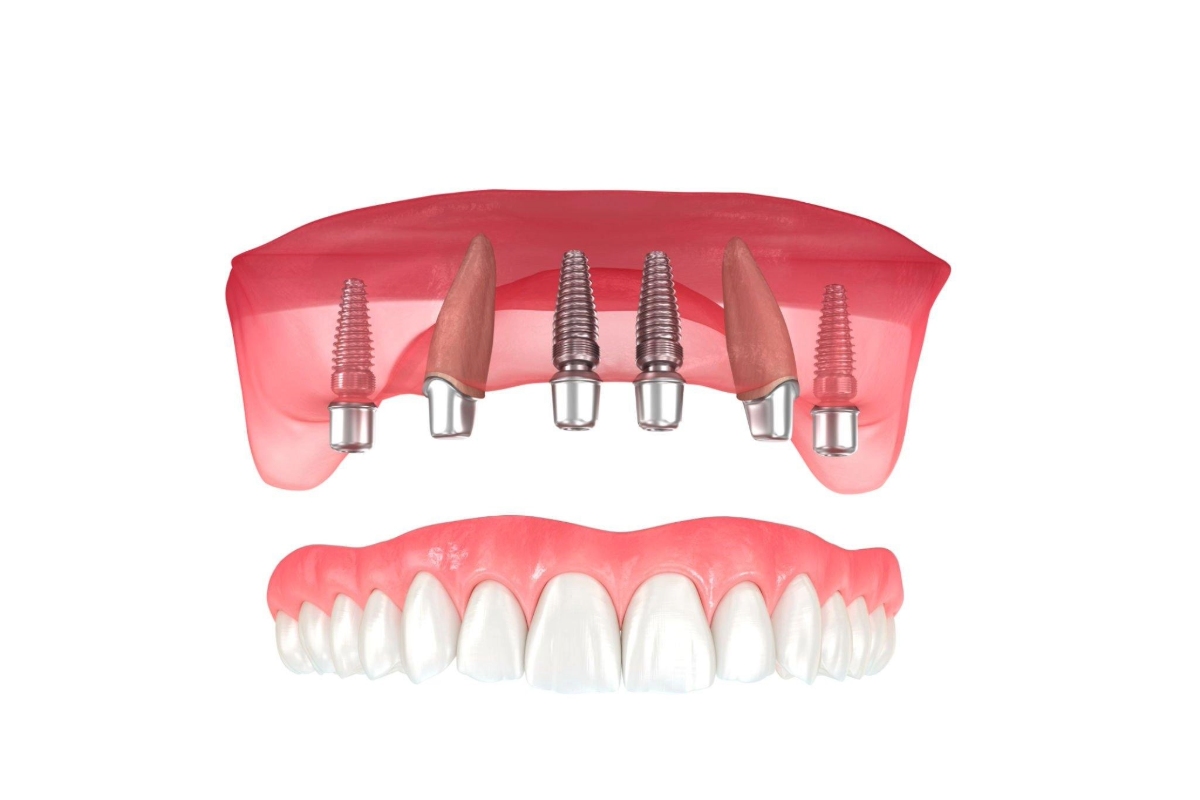Dental implants are widely regarded as an effective solution for replacing missing teeth. However, like any medical procedure, they come with their set of challenges and potential problems. Understanding these issues before undergoing the procedure can help patients make informed decisions and improve the chances of a successful implant. This article discusses common dental implant problems, their causes, and solutions.
What Are Dental Implants?
Dental implants are titanium posts surgically inserted into the jawbone to act as a replacement for the root of a missing tooth. These implants support artificial teeth, such as crowns, bridges, or dentures. The implant process involves several stages: initial consultation, surgical insertion, healing, and the attachment of the crown or prosthesis. While dental implants are generally successful, complications can arise at any stage, making it essential for patients to understand the potential risks involved.
Common Dental Implant Problems
While dental implants are a reliable option, they are not immune to complications. The following are some of the most common problems associated with dental implants.
1. Implant Failure
Implant failure is one of the most severe problems that can arise after a dental care implant procedure. This occurs when the implant does not fuse with the jawbone, a process known as osseointegration. Without proper osseointegration, the implant becomes loose and may need to be removed.
Causes of Implant Failure:
- Infection: Infection during the healing process can interfere with osseointegration.
- Excessive force: If the implant is subjected to too much pressure during the healing phase, it can fail to integrate.
- Poor bone quality: If the jawbone is insufficient or weak, the implant may not bond correctly.
- Pre-existing health conditions: Conditions such as diabetes or osteoporosis can affect the body’s ability to heal and integrate the implant.
- Smoking: Smoking can restrict blood flow to the implant site, slowing down the healing process and reducing the chances of successful integration.
Solutions:
- Bone grafting: If the jawbone is insufficient, a bone graft may be necessary to create a stable foundation for the implant.
- Early detection: Regular follow-up appointments with your dentist to monitor the healing process can help identify and address issues early on.
2. Gum Recession Around the Implant
Gum recession is a common issue that can occur around dental implants, particularly if the implant does not fit properly or if the gums are not adequately protected during the healing process. Receding gums can expose the implant base, leading to aesthetic concerns and increasing the risk of further complications such as infection or implant failure.
Causes of Gum Recession:
- Improper placement: If the implant is placed too close to the surface of the gums, it may cause gum recession over time.
- Periodontal disease: Existing gum disease can compromise the health of the gums around the implant.
- Excessive pressure: Brushing too aggressively or applying too much force on the implant can contribute to gum recession.
Solutions:
- Gum grafting: If gum recession occurs, a gum graft can be used to restore lost tissue and improve the appearance and health of the gums.
- Proper care: Maintaining good oral hygiene and avoiding excessive pressure on the implant can help prevent gum recession.
3. Peri-Implantitis
Peri-implantitis refers to an infection that occurs around the dental implant, affecting both the gums and the bone supporting the implant. It is a serious condition that can lead to implant failure if not treated promptly. Peri-implantitis is similar to periodontitis (gum disease) but occurs around the implant site.
Causes of Peri-Implantitis:
- Poor oral hygiene: Plaque buildup around the implant can lead to infection and inflammation.
- Smoking: Smoking can increase the risk of infection and slow down the healing process.
- Implant design: Certain implant designs are more susceptible to bacteria buildup than others.
- Bruxism: Grinding or clenching the teeth can cause stress on the implant and lead to inflammation.
Solutions:
- Regular cleaning: Routine dental visits to clean the implant and surrounding areas can prevent plaque buildup and reduce the risk of infection.
- Antibiotics: Infected tissue may require treatment with antibiotics to clear the infection.
- Surgical intervention: In severe cases, surgical cleaning of the infected area or even implant removal may be necessary.
4. Implant Overload
Implant overload occurs when too much pressure is placed on the implant, either due to bite forces or improper placement of the prosthetic teeth. This can cause the implant to become loose, damaged, or even fail entirely.
Causes of Implant Overload:
- Improper placement: An implant that is not aligned correctly may cause uneven pressure distribution during chewing.
- Bruxism: People who grind or clench their teeth put excessive pressure on their implants.
- Poor-fitting prosthetics: If the artificial teeth or dentures placed on the implant are not designed or fitted properly, they may put extra stress on the implant.
Solutions:
- Night guards: For patients who grind their teeth, wearing a night guard can reduce the risk of implant overload.
- Proper bite adjustment: Ensuring that the bite is correctly aligned can help prevent excessive force on the implant.
- Implant restoration: If necessary, the prosthetic teeth can be adjusted or replaced to ensure they do not place too much pressure on the implant.
5. Sinus Issues with Upper Jaw Implants
Dental implants in the upper jaw, particularly in the back regions, are susceptible to sinus complications. The upper jaw is in close proximity to the sinus cavities, and if the implant is placed too high or incorrectly, it can perforate the sinus membrane, leading to pain, swelling, and possible sinus infections.
Causes of Sinus Issues:
- Implant placement: If the implant is too long or positioned incorrectly, it may penetrate the sinus cavity.
- Bone loss: If there is not enough bone in the upper jaw, the implant may be placed too close to the sinus.
Solutions:
- Sinus lift: In cases where the sinus cavity is at risk, a sinus lift procedure can be performed before implant placement. This procedure involves lifting the sinus membrane to create more space for the implant.
- Careful planning: Using advanced imaging techniques such as 3D scans can help ensure proper placement of the implant and avoid sinus complications.
6. Nerve Damage
Nerve damage is a rare but serious complication of dental implants, particularly when implants are placed in the lower jaw, where the nerves are located. Nerve damage can cause numbness, tingling, or pain in the lips, chin, or gums. If not detected early, nerve damage can lead to permanent discomfort.
Causes of Nerve Damage:
- Implant placement too close to nerves: If the implant is inserted too deeply or incorrectly, it can damage nearby nerves.
- Lack of proper imaging: Insufficient pre-surgical imaging can increase the risk of nerve injury during the implant process.
Solutions:
- Pre-surgical planning: Proper imaging and planning can help avoid nerve damage by allowing the dentist to assess the position of nerves and the jawbone.
- Use of shorter implants: If the implant is too close to the nerve, a shorter implant may be used to avoid contact with the nerve.
- Immediate intervention: If nerve damage is suspected, prompt treatment can help reduce the severity of the condition.
7. Aesthetic Issues
While dental implants are designed to look like natural teeth, there can be aesthetic issues if the implant or surrounding gums don’t heal properly. Issues such as mismatched color, poor gum contour, or visible implants can affect the overall appearance of the implant.
Causes of Aesthetic Issues:
- Improper placement: If the implant is placed too far out of alignment, it can affect the final appearance of the implant.
- Gum recession: Receding gums can expose the metal of the implant, causing it to be visible.
- Infection or inflammation: If the surrounding tissues are inflamed or infected, it can affect the implant’s appearance.
Solutions:
- Gum grafting: If gum recession occurs, a gum graft can help restore the appearance of the gums.
- Customized restorations: Custom-made crowns or dentures can be designed to match the natural teeth and improve the aesthetics of the implant.
- Advanced techniques: Laser therapy and other cosmetic procedures can be used to refine the appearance of the gums around the implant.
Preventing Dental Implant Problems
While many of the problems discussed above are relatively rare, there are steps that patients can take to reduce the likelihood of complications. Some preventive measures include:
- Choosing a skilled implant dentist: The success of the implant procedure depends heavily on the skill of the dentist. Make sure to choose a dentist with experience in dental implants.
- Good oral hygiene: Keeping the area around the implant clean is essential to prevent infection and gum disease. Brush and floss regularly, and use an antimicrobial mouthwash.
- Regular check-ups: Routine dental visits after implant placement can help identify any potential issues early and ensure the implant is functioning correctly.
- Avoid smoking: Smoking impairs healing and increases the risk of complications. Avoid smoking to improve the chances of a successful implant.
Conclusion
While dental implants offer a long-lasting solution for replacing missing teeth, they come with potential challenges that must be understood and addressed. Implant failure, gum recession, infection, nerve damage, and aesthetic issues are among the most common problems associated with implants. With proper planning, care, and attention, many of these complications can be prevented or managed effectively. Patients considering dental implants should consult with an experienced dentist, adhere to post-surgical care instructions, and maintain good oral hygiene to ensure the best possible outcome.



